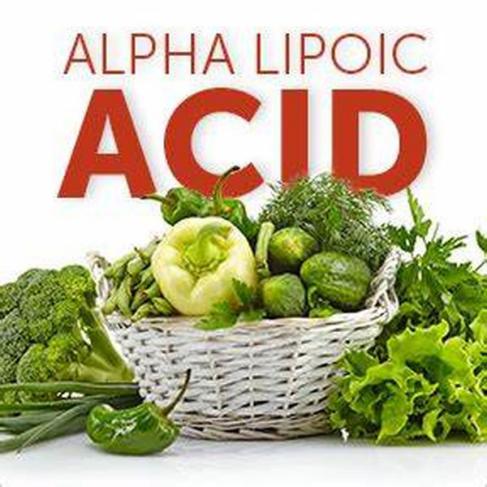Alpha-lipoic acid, commonly abbreviated ALA or LA, is a naturally occurring cofactor, essential for several enzymes involved in generating energy in human cells. It is found in many meat-based foods, such as kidney, liver and heart. However, the quantity assimilated in a normal diet is low, and positive therapeutic effects of ALA were described only using supplements. Also, ALA is synthesized in the body of healthy young adults, but this capability significantly declines with age, suggesting increased need of supplements for the elderly.
Most healthcare uses of lipoic acid stem from its antioxidant properties. Antioxidants are a class of molecules that function to combat oxidizing agents, such as free radicals created by UV radiation or metal toxicity. These agents are believed to be among the main causes for ageing and cancer, so supplementary antioxidant use is associated with increased life span and reduced cancer risk in model organisms.Alpha-lipoic acid, unlike other common antioxidants, is able to act both in aqueous and lipid environments, e.g. scavenge free radicals at different parts of the cell.Furthermore, another unique property of ALA is that it is capable of regenerating other antioxidants, such as vitamin C, E or glutathione, and even activate their synthesis in the cell, hence the name “universal antioxidant”. A strong cooperative effect, emerging when lipoic acid is used together with other naturally occurring antioxidants, has been recently shown in human skin cells. ALA benefits may extend even to vascular disease prevention, metal detoxification, hypertension treatment, and anti-inflammatory properties.
Besides the well-researched use as an antioxidant, lipoic acid is attracting interest as a powerful treatment in various other problems. Despite earlier research focusing on dietary supplements of alpha-lipoic acid, they appear to be both absorbed and cleared rapidly, resulting in limited and transient pharmacological activity.ALA absorption through skin is proven to be effective and shows promise in pharmacology. Therefore, dermal ALA applications are gaining more interest, with most current studies focusing on animal models. Applied directly on skin, lipoic acid has been recently shown to promote wound healing in rats. Together with epigallocatechin gallate, ALA applications successfully treated diabetic skin wounds (ulcers). It is also suggested as a prophylactic measure, to prevent wounds from deteriorating in individuals at risk for ulcers. Recent studies implicate that lipoic acid supplements could be beneficial for systemic sclerosis (scleroderma) patients.
Concerning cosmetic skin care, ALA is an attractive ingredient not only due to its antioxidative properties. Reduction in collagen is the key factor associated with changes that occur in skin appearance due to ageing, and ALA was found to enhance collagen synthesis in human cell lines. A study where subjects applied 5 % ALA cream to one half of their face found that ALA significantly improved the appearance of treated skin, as evaluated by the subjects themselves, other researchers, and even automatic laser-based measuring methods. In skin care preparations, lipoic acid is often mixed with vitamin C or similar molecules—-this combination also protects skin from UV damage, while maintaining the deeper layers hydrated.Protection against radiation damage may also be useful for radiation therapy patients.Vitamin A also increases the stability of ALA, suggesting grouping these substances together.
Post time: Apr-03-2020
